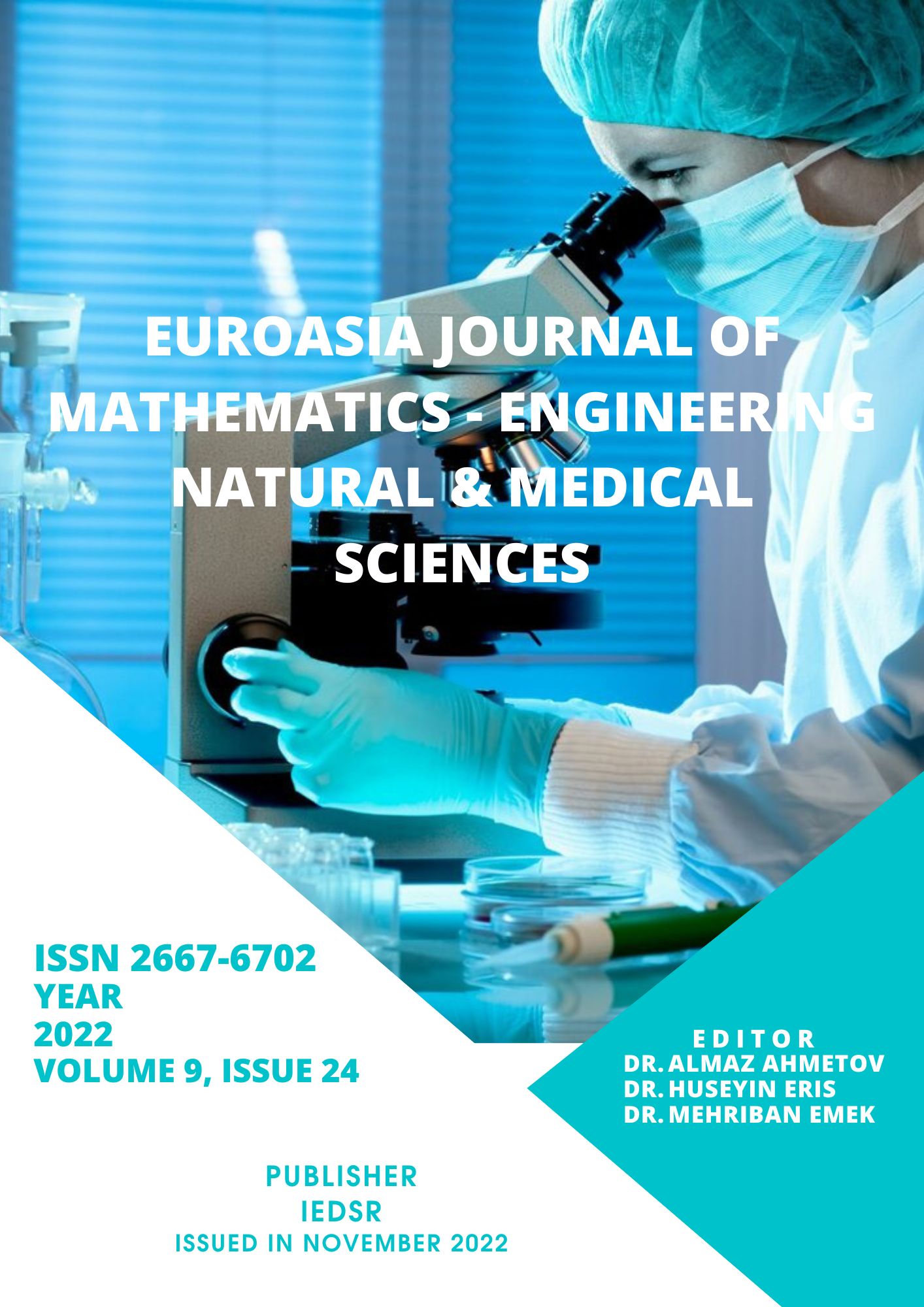Impact of Social Behavior on the Dynamic Spread Sars-Cov-2 in Lebanon According to the SIR Model
DOI:
https://doi.org/10.5281/zenodo.7364583Anahtar Kelimeler:
SIR Model, Data Analysis, Sars-Cov-2 spread, Population behavior, Infection transmissionÖzet
Analyzing the dynamics of Sars-Cov-2 spread in the Lebanese society is what this article mainly aspires and points to, where the study was predicated on a compartmental model, namely SIR, the widely known model in epidemiology. SIR. (Susceptible-Infected-Recovered) materializes a basic conceptional structure for theoretically investigating the virus spread and its dynamics within a community, through focusing on the interaction and communication between infected and recovered people. Consequently, providing the necessary attempts to overcome the epidemic, and diminishes its expansion to rescue lives. In which, limiting contact absolutely reduces the possibility of transmitting or contracting an infection. This investigation on a representative sample of the Lebanese population highlights the various drivers and dynamics of this proliferation. These drivers or factors clarify the behavior of the population (wearing a mask, washing their hands) in experiencing the epidemic crisis and their abuse for measures (safety distance, closures) adopted by the authorities to combat the epidemic. So, it turns out that the careless and incautious attitude of the Lebanese population, besides the unsatisfactory control to fulfill the government rules against the dynamics of virus spread was shown by the modeling of Sars-Cov-2 dynamics through the SIR model.
Referanslar
B. Pell, Y. Kuang, C. Viboud, G. Chowell, “Using phenomenological models for forecasting the 2015 Ebola challenge,” Epidemics, Vol. 22, pp. 62–70, 2018.
E. Bonyah, O. O. Kazeem, “Mathematical modeling of Zika virus. Asian Pacific Journal of Tropical Disease,” Asian Pacific Journal of Tropical Disease, Vol. 6, no. 9, pp. 673-679, 2016.
R. U Din, K. Shah, I. Ahmad, T. Abdeljawad, “Study of Transmission Dynamics of Novel COVID-19 by Using Mathematical Model,” Advances in Difference Equations, 323, 2020.
Study of genetic mutations and dynamic spread of SARS-CoV-2 pandemic and prediction of its evolution according to the SIR model (PPRID: PPR272360) and EUROPE PMC EMSID: EMS114043. https://arxiv.org/abs/2011.06694v1
World Health Organization (WHO). Coronavirus. Available online: https://www.who.int/health-topics/ coronavirus (accessed on 6 August 2020).
Ministry of Health, Covid19 Command and Control Center CCC, https://www.moh.gov.sa/en/CCC/Pages/default.aspx (cited date, November 22, 2020).
S.T.M Thabet, M.S Abdo, K. Shah, and T. Abdeljawad, “Study of transmission dynamics of COVID-19 mathematical model under ABC fractional order derivative,” Results in Physics, Vol. 19, 103507, 2020.
G.O. AGABA, Y.N. KYRYCHKO AND K.B. BLYUSS, Time-delayed SIS epidemic model with population awareness, Ecological Complexity 31 (2017) 50–56.
N. FERGUSON ET AL. , Impact of non-pharmaceutical interventions (NPIs) to reduce COVID19 mortality and healthcare demand, report, Imperial College COVID-19 Response Team (20).
H. SALJE, C. TRAN KIEM, N. LEFRANCQ, N. COURTEJOIE, P. BOSETTI, ET AL., Estimating the burden of SARS-CoV-2 in France, preprint, HAL, (2020).
Tahar Z. Boulmezaoud, Un modèle de prédiction de l’épidémie Covid-19 et une stratégie zig-zag pour la contrôler Url: http://boulmezaoud.perso.math.cnrs.fr/
https://www.who.int/emergencies/diseases/novel-coronavirus 2019/situation-reports
Baoquan Chen, Mingyi Shi, Xingyu Ni, Liangwang Ruan, Hongda Jiang, Heyuan Yao, Mengdi Wang, Zhenhua Song, Qiang Zhou, Tong Ge, Visual Data Analysis and Simulation Prediction for COVID-19, arXiv:2002.07096
Daily report on Covid-19, Disaster Risk Management Unit, www.drm.pcm.gov.lb.
İndir
Yayınlanmış
Nasıl Atıf Yapılır
Sayı
Bölüm
Lisans
Telif Hakkı (c) 2022 Euroasia Journal of Mathematics, Engineering, Natural & Medical Sciences

Bu çalışma Creative Commons Attribution-NonCommercial 4.0 International License ile lisanslanmıştır.

